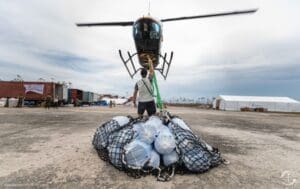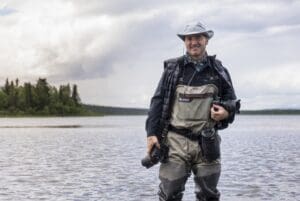My Journey into Humanitarian Photography
In 2013, I found myself at a crossroads in my photography career. It was then that I was asked to take some photos for an organization in Uganda. That trip opened my eyes to the potential impact of my work. I realized I could use my skills to support various organizations, not only in Uganda but also in surrounding countries. Up to that point, my photography had lacked a sense of purpose, but I knew this was what I wanted to do.
I spent most of that year donating my time and services to about 12 or 13 organizations across Uganda and Kenya. When I returned home, several of these organizations asked me to come back, this time offering to pay me. This marked the beginning of my new calling as a humanitarian photographer. It’s been an amazing journey, and I’m grateful every day to wake up and do this work.

A Memorable Experience
One of my most memorable experiences was a recent trip to Sudan. For the first time, I witnessed the devastating reality of starvation. It’s 2024, and there should be no place on our planet where people are starving, yet here were hundreds of thousands suffering due to conflict. Despite the challenging conditions, it was an important trip. This is at the heart of being a humanitarian photographer—telling the stories that need to be told, no matter how difficult.
Overcoming Challenges in the Field
Fieldwork presents numerous challenges, from damaged infrastructure to scarce resources. Ensuring you have enough food and water is vital. You need to be self-sufficient and not a burden to the humanitarian groups you’re there to support. I always travel with a first aid kit, appropriate clothing, extra food and snacks, antibiotics, and other medications. A bandanna is my best friend in the field; it’s versatile and indispensable.
It’s crucial to have all necessary vaccinations and copies of travel documents, including passport photos and a letter of intention from the organization you’re working for. An unlocked phone, universal power adapter, and extra external batteries are also essential. Simple items like shower shoes, a travel towel, and laundry detergent make a big difference. Always pack electrolytes for your water and a good water filter for emergencies.
Building Trust with Communities
Building trust with people in the field starts with genuine connection. I introduce myself and share my intentions without bringing my camera at first. After establishing rapport, I ask for permission to take photos and tell their stories. Helping with physical relief efforts, like distributing supplies or cleaning up, also builds trust and shows genuine care. It’s important to remember that people come first, and their stories come second.
Advice for Aspiring Humanitarian Photographers
For those aspiring to be humanitarian photographers, focus on listening and being adaptable in chaotic environments. Be prepared to live without the finer things in life and to witness and feel the loss and heartache that comes with this work. Having a support network to debrief challenging experiences is crucial. Don’t wait for opportunities to come to you—create your own projects and find ways to support the causes you care about.
Ethical Considerations
People always come first. If you find yourself questioning whether to take a photo, you probably shouldn’t. Ensure that your images portray people truthfully and sensitively.
Essential Gear for the Field
I always bring a good hat, especially since I have no hair on my head, a bandanna, a water bottle with electrolytes, and plenty of snacks. I carry multiple cameras and always have a backup. I also recommend never checking in your equipment; keep it with you. Once, I lost 3/4 of my equipment because the ground crew forgot to load the luggage. Luckily, I had a camera and two lenses in my backpack, which allowed me to cover the assignment until my equipment arrived five days later.
About Marshall Foster
When I returned home, several of these organizations asked me to come back, this time offering to pay me. This marked the beginning of my new calling as a humanitarian photographer. My work aims to tell compelling stories that raise awareness and inspire positive change. From conflict zones to serene landscapes, my portfolio reflects a deep appreciation for the subtleties of light, composition, and emotion. For more information and to view my work, visit marshallfoster.com.


